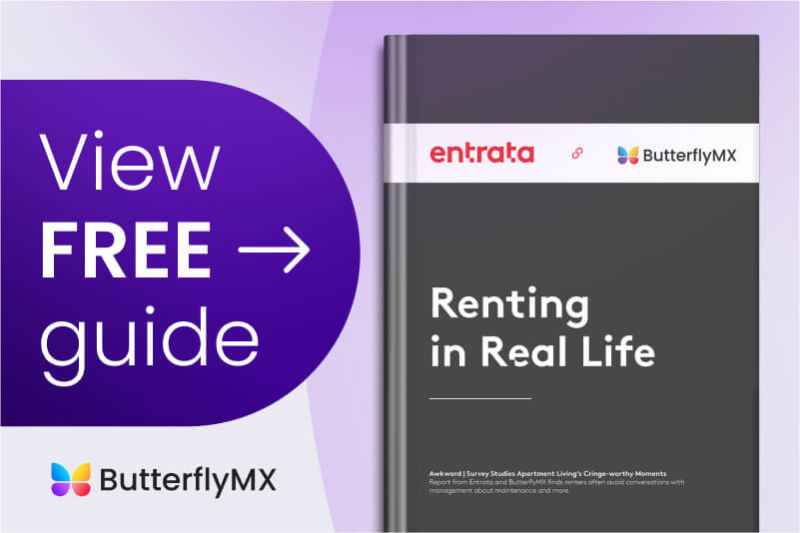Key takeaways
- Apartment breed restrictions are rules that describe the types of dog breeds residents can own on the property.
- Renting to dog owners requires clear-cut guidelines on breed restrictions.
- Most restrictions contain dogs from aggressive dog breed lists put together by property insurance entities.
- Four tips for renting to dog owners are to ask for references, require pet deposits, request training documents, and reevaluate weight restrictions.

It’s no surprise that tenants want apartments for themselves. But they often want to know that their furry friends are also welcome. As such, an apartment’s pet policy is one of the first things prospects will ask about.
However, pet policies are subject to more than just the apartment manager’s whim. They often fall within state, county, and district ordinances. Below, we’ll take a deeper look at the decisions that go into setting breed restrictions and how to make them work for your residents.
In this post, you’ll learn:
- What dogs are typically not allowed in apartments?
- What are apartment breed restrictions?
- Why do so many apartments have breed restrictions?
- 4 tips for renting to dog owners
What dogs are typically not allowed in apartments?
With so many breeds, crossbreeds, and mixed-breed dogs, it can be difficult for people to know exactly what breeds are considered restricted. That’s why you should create an outline that answers this question for your tenants.
Commonly restricted dog breeds in apartments include:
- Alaskan Malamute
- American Bulldogs
- American Pit Bull Terriers
- Boxers
- Chow Chows
- Doberman Pinschers
- German Shepherds
- Great Danes
- Huskies
- Mastiffs
- Pit bulls
- Rottweilers
- Terriers
- Wolf Mixes
Keep in mind that this is not an exhaustive list, but these breeds often receive pushback from insurance companies.
Apartment breed restrictions by size and age
It’s common to have restrictions in place for the size and age of a dog. Many property owners assume that larger dogs can be more aggressive and destructive. It’s also a popular assumption that puppies will cause more damage and cause more disturbances than older dogs. However, it’s important to keep in mind that there is not a lot of data that backs this up. Like people, dogs are individuals who may act independently of their size and age.
What breeds can live in apartments?
So, you’ve created a detailed list of breeds that are restricted from apartment living. But it can help also to have a list of the least aggressive dog breeds that aren’t restricted.
Common breeds that are typically allowed in apartments:
- Cavalier King Charles Spaniels
- Some Poodle breeds
- French Bulldogs
- Beagles
- Pugs
- Chihuahuas
- Yorkshire Terriers
Again, this isn’t a comprehensive list. In fact, you’re welcome to create one that includes more dogs that are allowed on the property. Having a more inclusive outline of the number of breeds considered the best dogs for apartments can help tenants choose wisely. What’s more, allowing more dog breeds will appeal to more prospects.
What are Apartment breed restrictions?
Apartment breed restrictions are rules that dictate which types of dogs a resident can have in their unit. Restrictions are enforced in multifamily housing because they absolve managers and owners of liability should a dog become aggressive. In fact, an apartment with no breed restrictions could be vulnerable to legal repercussions if the dog attacks the property.
For this reason, many property insurance companies require strict enforcement of breed restrictions. These restrictions often center around a well-known list of the most aggressive dog breeds. However, this list can sometimes differ by area.
Can landlords discriminate against dog breeds?
As unfair as it might sound, landlords can discriminate against dog breeds. However, this is not without reason, as some dogs are bred to be aggressive or have physical attributes that could cause harm to a person or animal.
Why do so many apartments have breed restrictions?
Apartments have breed restrictions because certain breeds of dogs are perceived to:
- Cause physical damage to the property
- Hurt people and other animals
- Bark and cause noise violations
In short, certain breeds of dogs seem likely to cause problems that many property owners would rather avoid. However, many of these restrictions are based on assumptions and not hard science.
4 tips for renting to dog owners
When it comes to renting to dog owners, there are many considerations.
For example: Should you have weight restrictions? Should you require an added fee for pet rent? Should you place restrictions on breeds in your pet-friendly amenities? The only right answers are the ones that protect you and your residents from liability.
However, there are a few ways that you can help current and prospective residents make sure their dogs have a home on your property regardless of their breed.
Four tips for breed-restricted renting:
- Ask for references
- Require a pet deposit
- Request training certificates
- Reevaluate weight restrictions
1. Ask for references
Asking prospective residents for references on their incoming pets can help you gauge how they’ve behaved in the past.
Their former landlords and property managers should be able to tell you if the dog ever had behavioral problems and if the pet owner did anything to minimize the issue. If references come back clear, then you might be able to make an exception.

2. Require a pet deposit
A pet deposit is a sum of money paid upfront to hold property in case of damage due to pet activity. Property owners who want to protect their assets require pet deposits, and very few exceptions exist.
Pet deposits usually range from $200 to $500, with smaller additions per additional pet. Best practices suggest managers should be fair about returning the deposit to responsible pet owners.
However, be aware that there are strict guidelines for landlords and property managers concerning pet rent, deposits, and breed restrictions concerning service and emotional support animals.
3. Request training certificates
Say a resident or prospect has a pet that narrowly falls within the restricted dog breeds list. Sometimes, you can’t afford to not take a lease, so what do you do?
In this case, you could request a training certificate.
A training certificate that proves a dog has undergone behavioral training and is easy to control is a good indication that the owners are serious about their responsibility. If an owner isn’t willing to go the extra mile, then allowing an exception is likely not a good idea.
4. Reevaluate weight restrictions
Imagine a trusted resident approaches you with the hope of adopting a non-aggressive dog breed that is over the weight restriction. Do you stick with your guidelines, or do you make an exception?
The upside to reevaluating your weight restrictions for dogs is that you may have an even more favorable opinion from your residents. Conversely, the downside is that you risk other tenants finding out and getting angry that you didn’t make an exception for them.
The final decision highly depends on whether the positives outweigh the negatives.
Discover the eight amenities proven to make your residents happy:
Are there reasons to waive dog breed restrictions for your property?
Some of the most common reasons property managers might waive apartment breed restrictions include:
- Increasing revenue from deposits and rent.
- Appealing to prospective tenants.
- Incentivizing current residents to renew their leases.
- Engaging in inclusivity and non-discriminatory practices.
- Making exceptions for emotional support or guide dogs.







